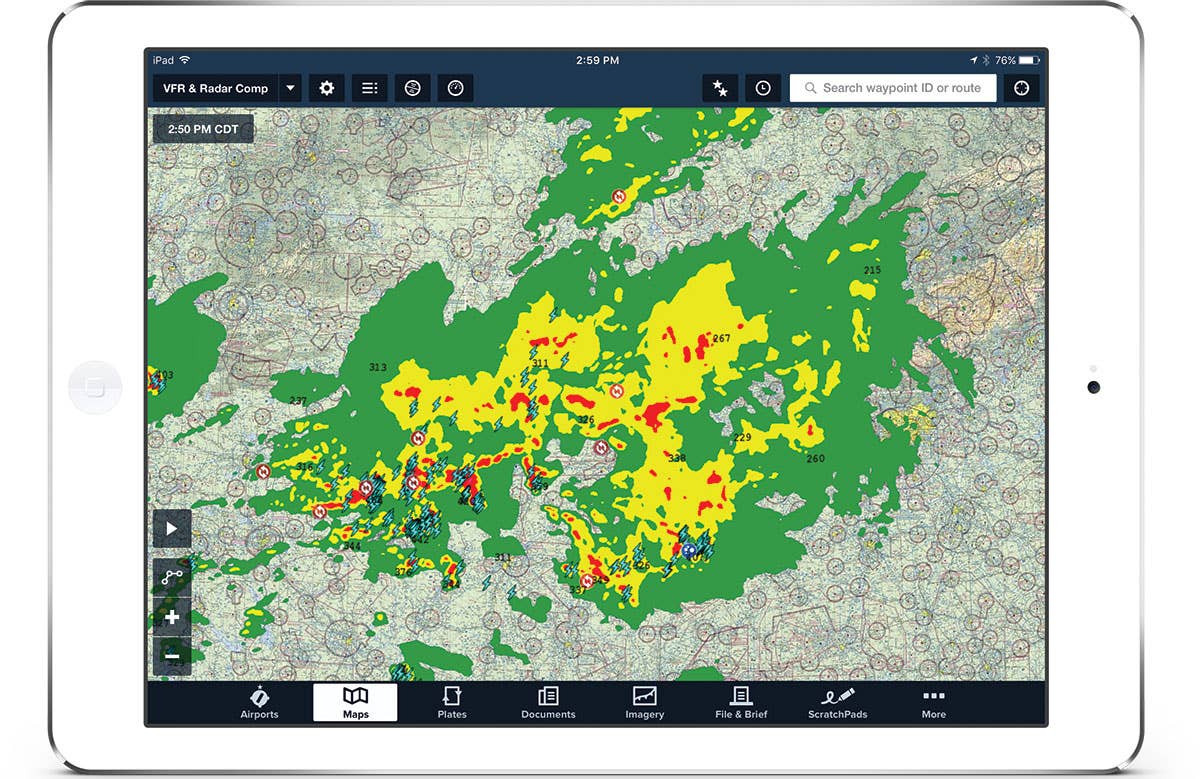
The increasing use of datalink weather in the cockpit may deserve credit for the decline of fatal aviation accidents caused by weather. [FLYING Archives]
Q: Can you trust datalink weather even though it's delayed?
Yes. Just because the radar picture you see on your screen is delayed by five to 15 minutes doesn’t mean it can’t be used for smart in-flight decisions. Whether it’s from a portable ADS-B re-ceiver or a panel-mount Sirius XM receiver, datalink weather can help you understand the all-important “big picture” and make deviations far in advance of dangerous weather. Don’t pick your way through embedded thunderstorms based on your iPad screen; instead, change your route of flight to miss the entire weather system by many miles. If you’re not sure in which direction or how fast the weather is moving, animate the radar and watch the trend. Then, give yourself a wide margin and try to stay in visual conditions if possible. Even if you’re IFR, the most reliable way to avoid bad weather is to stay out of the ugly clouds and use datalink weather to back up what you see from the left seat. ADS-B or SiriusXM is a valuable tool, but it cannot make the decision for you—that responsibility rests with the pilot in command.

Sign-up for newsletters & special offers!
Get the latest FLYING stories & special offers delivered directly to your inbox






